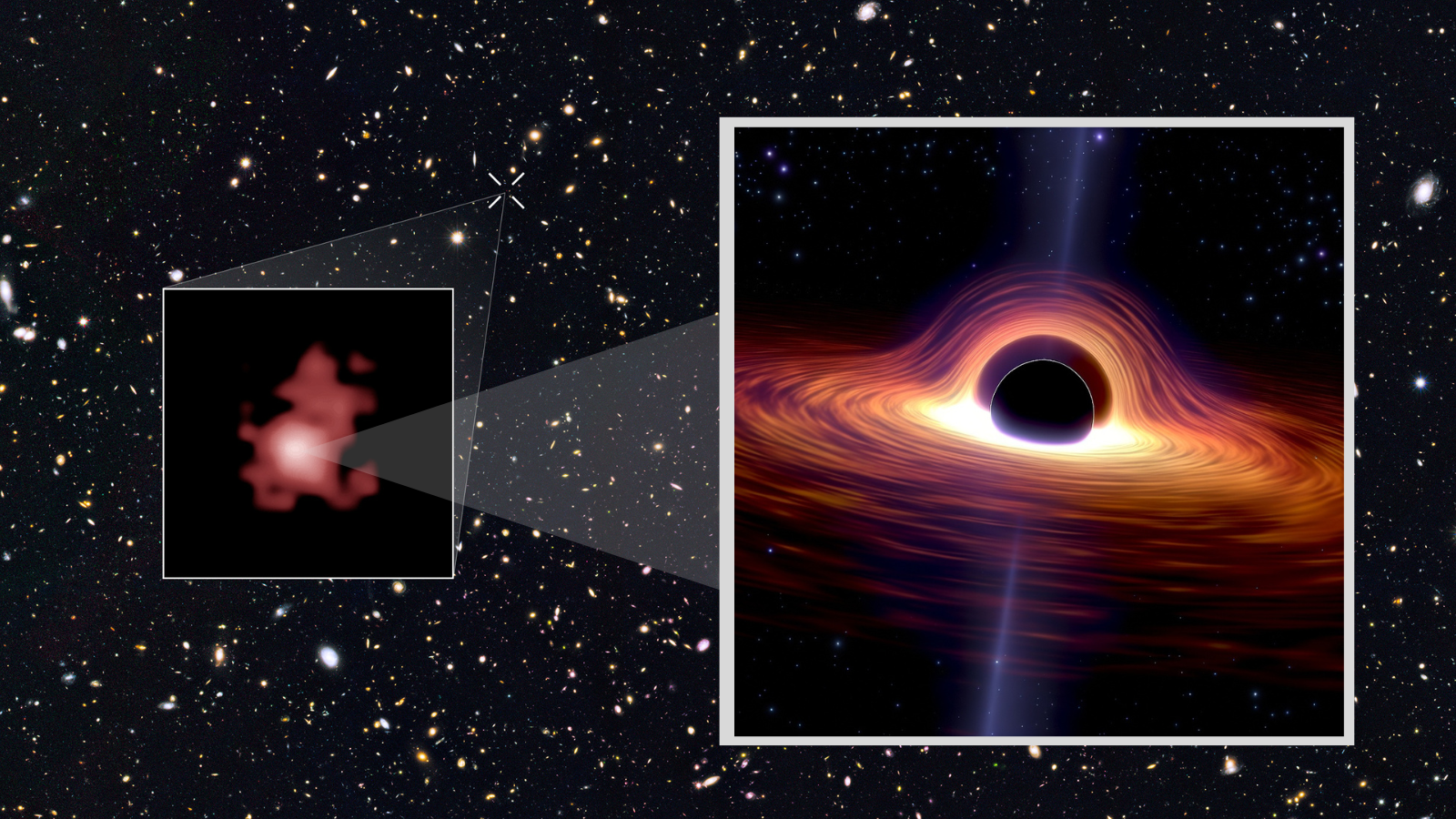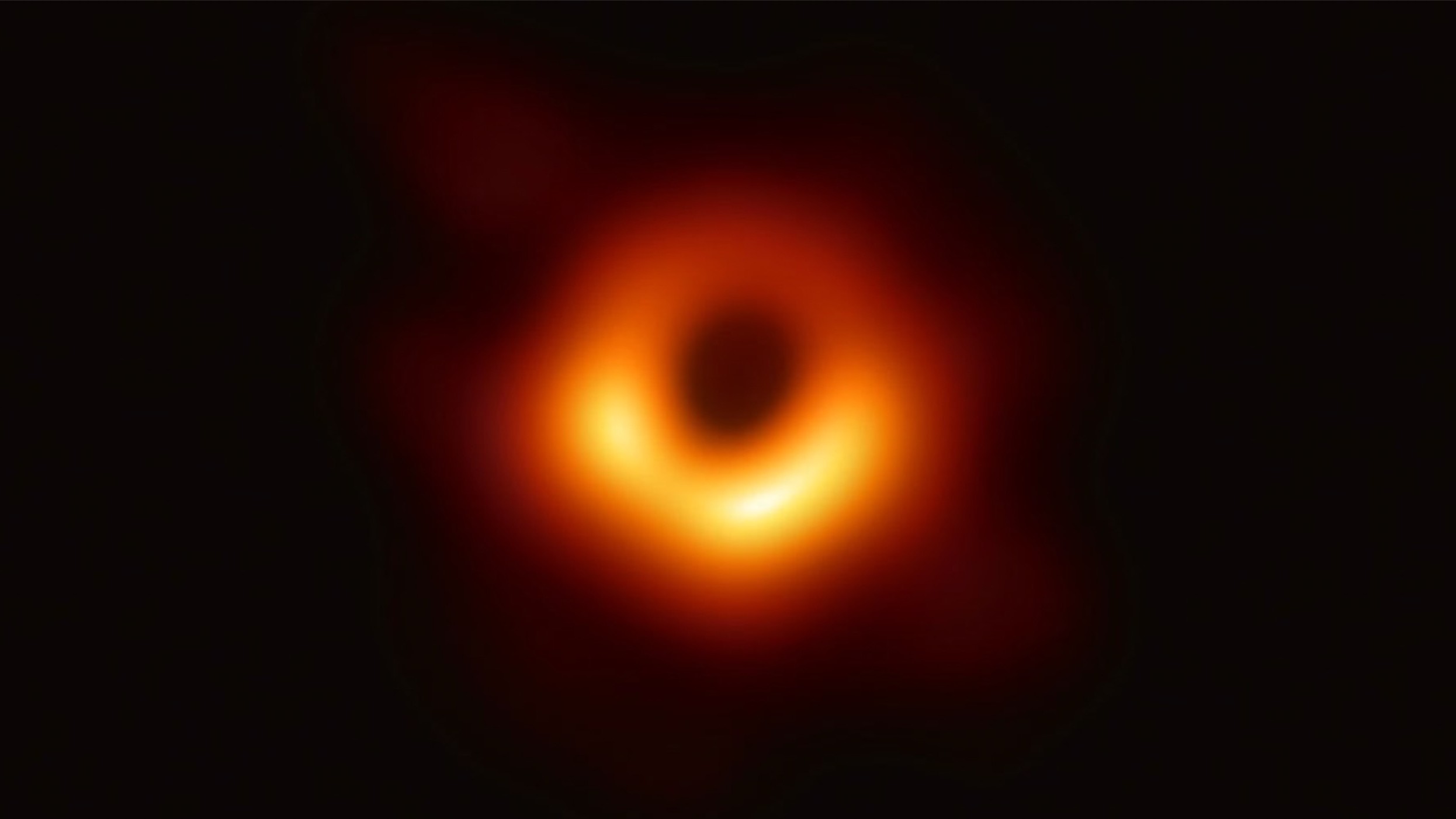James Webb Space Telescope discovers oldest and most distant black hole ever seen
The ravenous black hole that existed just 400 million years after the Big Bang could help explain how supermassive black holes grew so rapidly.

A team of astronomers has used the James Webb Space Telescope (JWST) to discover the most distant and oldest black hole ever seen as it feasts upon its host galaxy.
The discovery could be a massive step forward in understanding how supermassive black holes reached masses equivalent to millions of billions of times that of the sun in the very early epochs of the universe.
The black hole dwells in the ancient galaxy GN-z11, which is 13.4 billion light years away and is thus seen as it was just 400 million years after the Big Bang. The black hole itself is around 6 million times as massive as the sun and seems to be feeding on matter from its surrounding galaxy five times more rapidly than the limit suggested is sustainable by current theories.
University of Cambridge Department of Physics and team leader Roberto Maiolino described the discovery as "a giant leap forward" for black hole science in a statement.
Related: Scientists discover cosmic fossil created by erupting supermassive black hole
"It's very early in the universe to see a black hole this massive, so we've got to consider other ways they might form," Maiolino said in the statement. "Very early galaxies were extremely gas-rich, so they would have been like a buffet for black holes."
Are supermassive black holes overeaters?
The size of early supermassive black holes that formed when the universe was less than 1 billion years old is a problem for formation theories because reaching a mass of millions or billions of times that of the sun should take billions of years of constant feeding.
Breaking space news, the latest updates on rocket launches, skywatching events and more!
"It's like seeing a family walking down the street, and they have two six-foot teenagers, but they also have with them a six-foot tall toddler," Maynooth University research fellow John Reagan, who was not involved in this research, told Space.com in reference in to previous discovery. "That's a bit of a problem; how did the toddler get so tall? And it's the same for supermassive black holes in the universe. How did they get so massive so quickly?"
Scientists currently have two main routes that black holes could take to reach supermassive status in the early universe. They could start out as small black hole seeds that are created when massive stars collapse at the end of their lives and after millions or billions of years, or they could skip this stage entirely.
This could possibly occur if vast clouds of cold gas and dust collapse to immediately form a "heavy black hole seed" with a mass a few million times that of the sun. That way, the process gets to fast forward through millions or billions of years of stellar evolution, getting a headstart on the feeding and merger processes that help black hole seeds grow to supermassive black holes. The discovery of this new ancient black hole with a mass a few million times that of the sun favors that heavy seed theory.

Yet, on the flip side of this, the rate at which the black hole in GN-z11 is accreting matter could suggest that black holes may be capable of feeding much faster than other black holes discovered in the early universe have been observed to do so. This would be a leg up for small black hole seed theories.
A mathematical formula known as the Eddington limit marks how fast a body, like a star, can accumulate mass without the radiation it emits (its luminosity) pushing that mass away and thus cutting off that food supply.
While black holes don't emit light because they are bounded by a light-trapping boundary called an event horizon, their massive gravitational influence does cause the material that swirls around them to be violently churned and heated, emitting radiation in the process. The more rapidly a black hole feeds, the more intense the light from that region, called an active galactic nucleus (AGN), is.
Thus, the Eddington limit applies to this region, and it can similarly act to push material away and cut off a black hole's feeding frenzy.
This newly discovered black hole is accreting matter from its host galaxy at a rate five times higher than the Eddington limit. Periods of so-called "super-Eddington accretion" can occur but do so in limited bouts.
The team estimated that if this period of voracious feeding for this black hole had been proceeding for 100 million years, it might not have had to start life as a heavy black hole seed. It could have formed from a much lighter stellar-mass black hole seed between around 250 million and 370 million years after the Big Bang and rapidly grown to the mass it is as the JWST observes it 13.4 million years ago.
Feeding black hole may doom its host galaxy
One thing the team is fairly certain of is the intense feeding of this black hole is responsible for GN-z11 itself, which is around 100 times smaller than the Milky Way and highly luminous. But the gluttonous black hole is also likely to stunt the growth of its host galaxy.
Ultrafast winds of particles belched out from around the feeding black hole are likely to be pushing away gas and dust from the galaxy's heart. Cold clouds of gas and dust collapse to birth stars, so this means that the black hole is grinding stellar birth to a halt, in the process "killing" the growth of this small galaxy.
As well as learning more about this black hole and its galaxy, the team behind this research believes that the power of the JWST should help uncover more black holes in the early universe.
In particular, they are aiming to discover small black hole seeds in the infancy of the cosmos and put to bed the debate surrounding the premature growth of supermassive black holes.
"It's a new era: The giant leap in sensitivity, especially in the infrared, is like upgrading from Galileo's telescope to a modern telescope overnight," Maiolino concluded. "Before the JWST came online, I thought maybe the universe isn't so interesting when you go beyond what we could see with the Hubble Space Telescope. But that hasn't been the case at all: The universe has been quite generous in what it's showing us, and this is just the beginning."
The team's research was published on Wednesday, Jan. 17, in the journal Nature.
Join our Space Forums to keep talking space on the latest missions, night sky and more! And if you have a news tip, correction or comment, let us know at: community@space.com.

Robert Lea is a science journalist in the U.K. whose articles have been published in Physics World, New Scientist, Astronomy Magazine, All About Space, Newsweek and ZME Science. He also writes about science communication for Elsevier and the European Journal of Physics. Rob holds a bachelor of science degree in physics and astronomy from the U.K.’s Open University. Follow him on Twitter @sciencef1rst.
